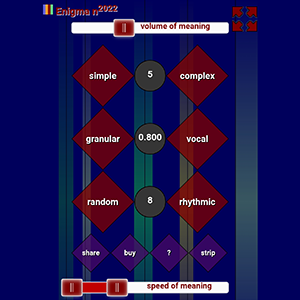
Enigman2022
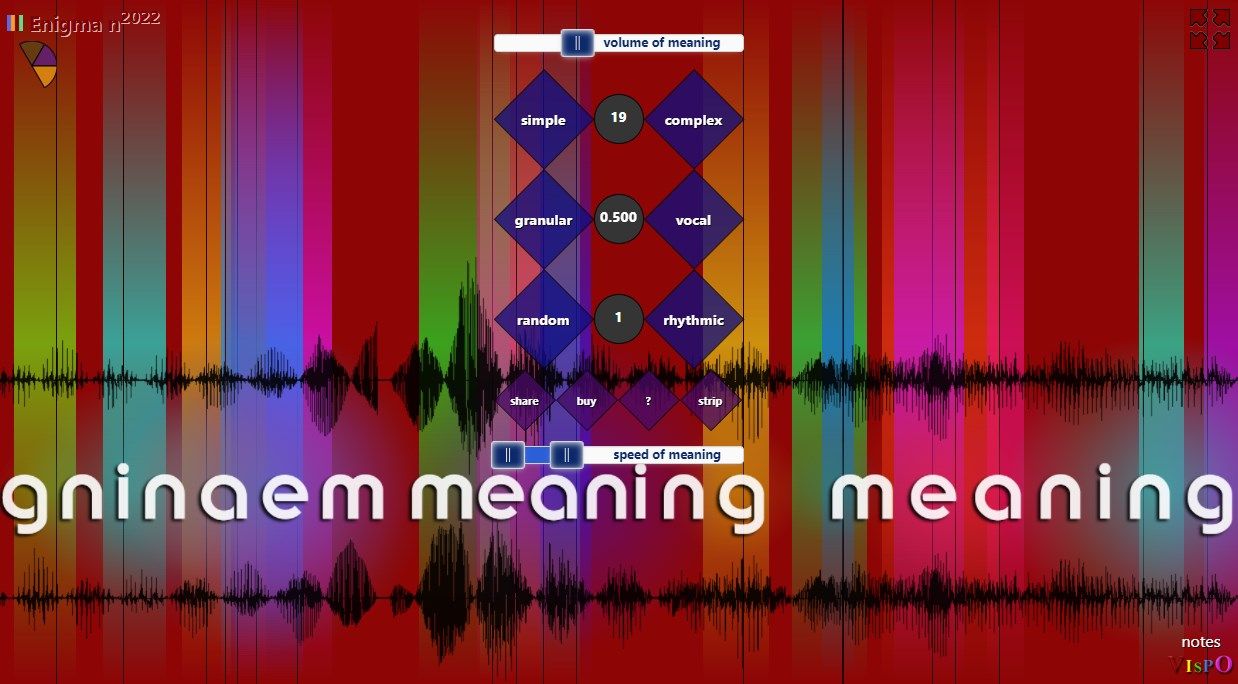
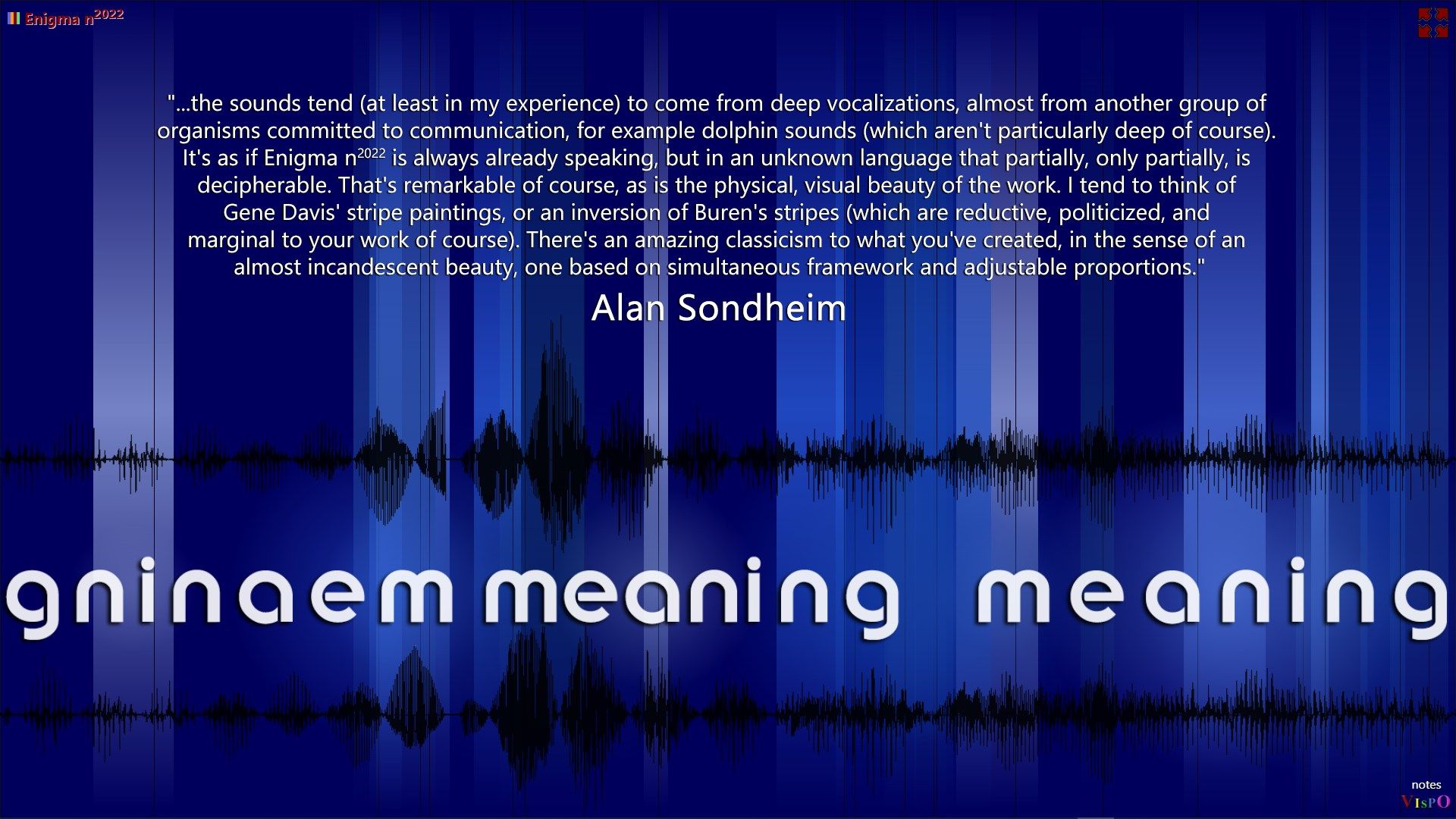
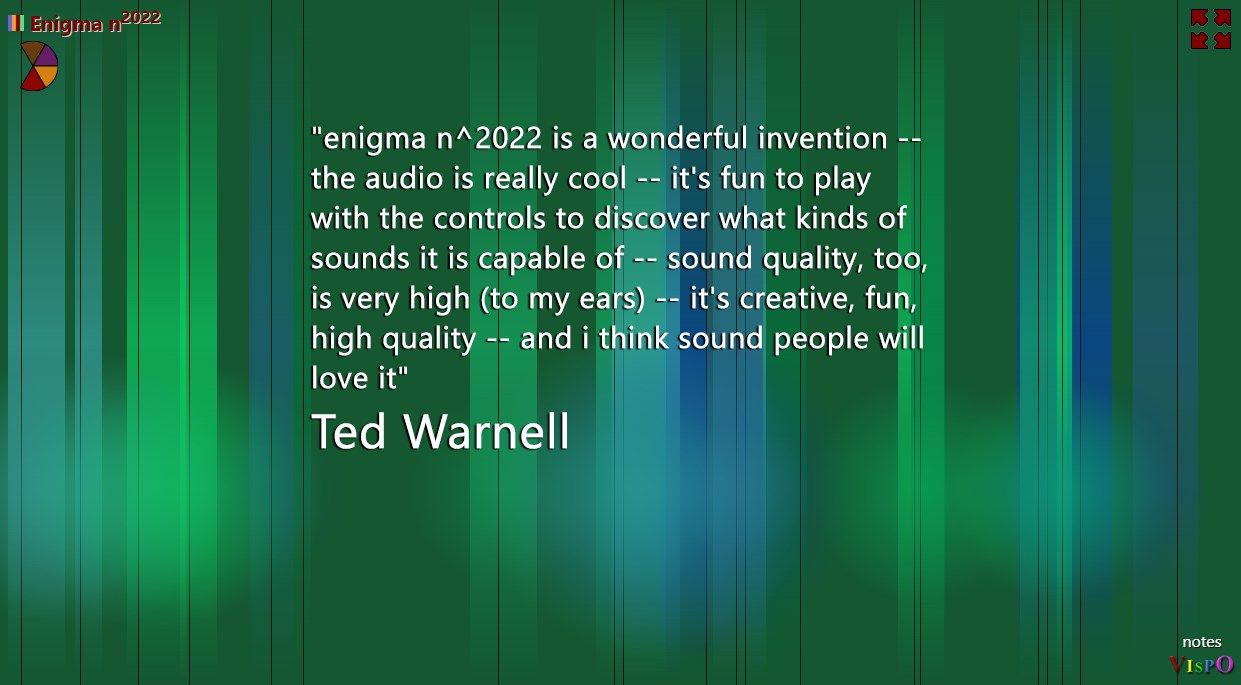
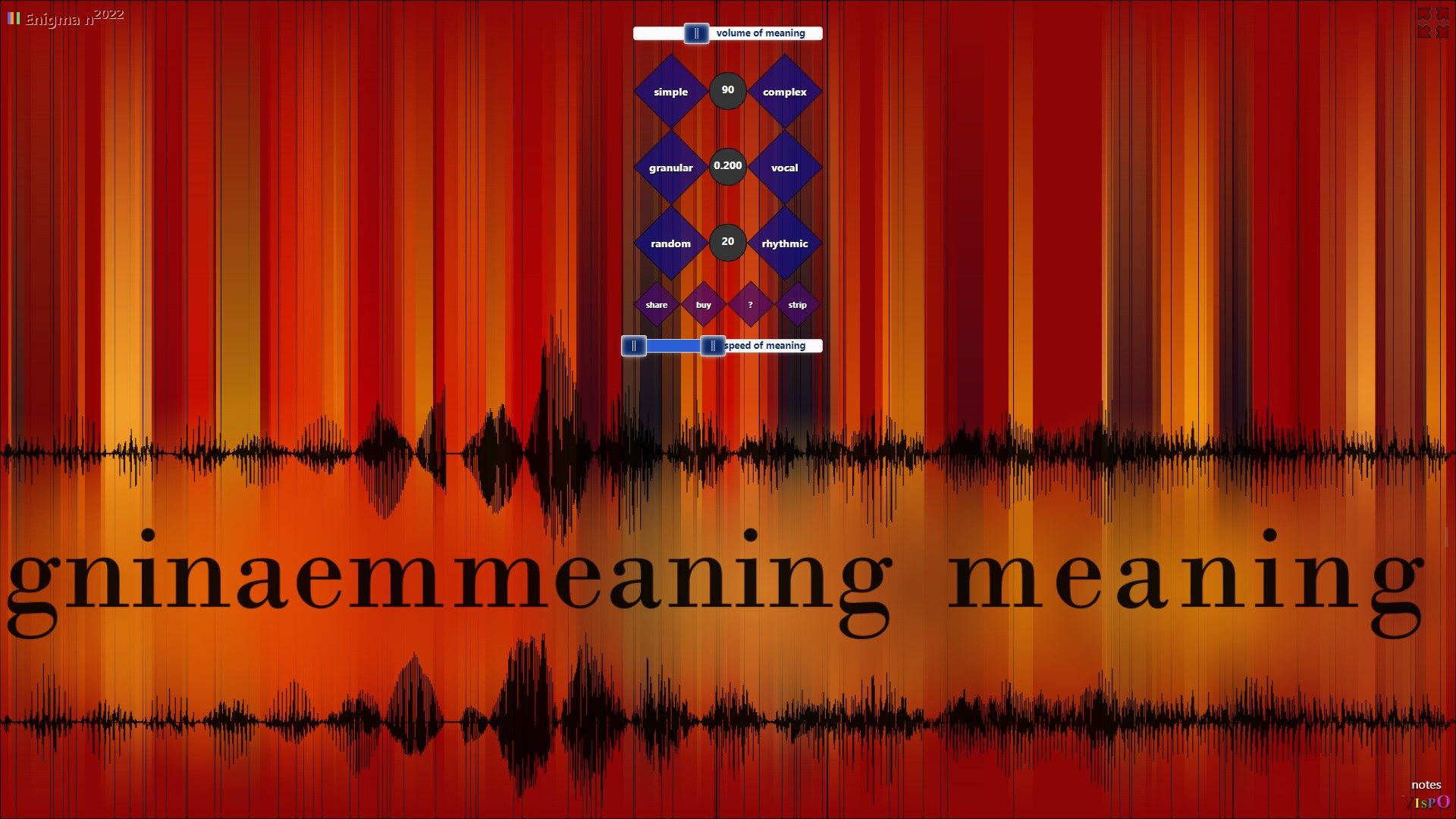
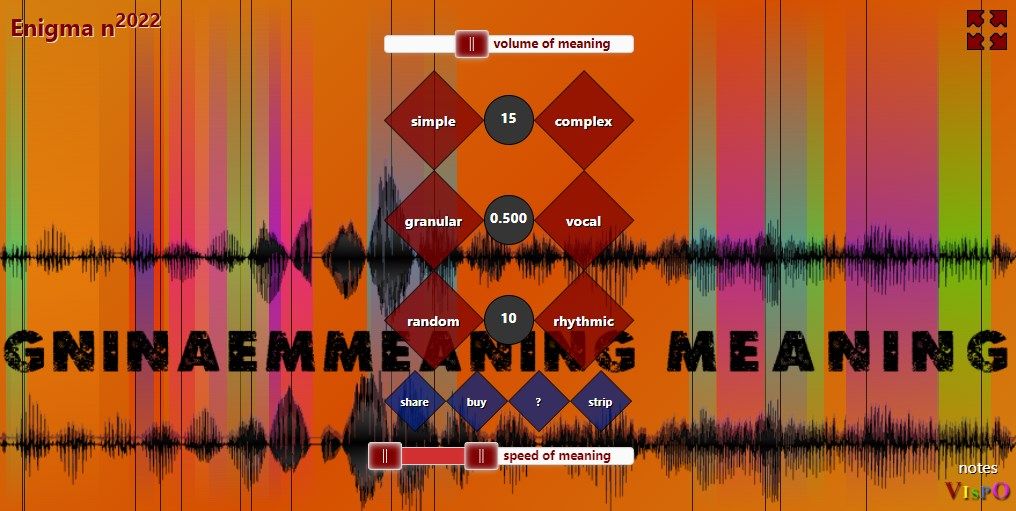
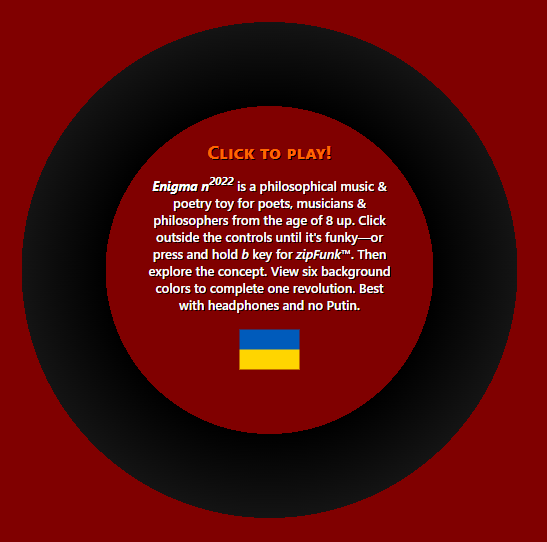
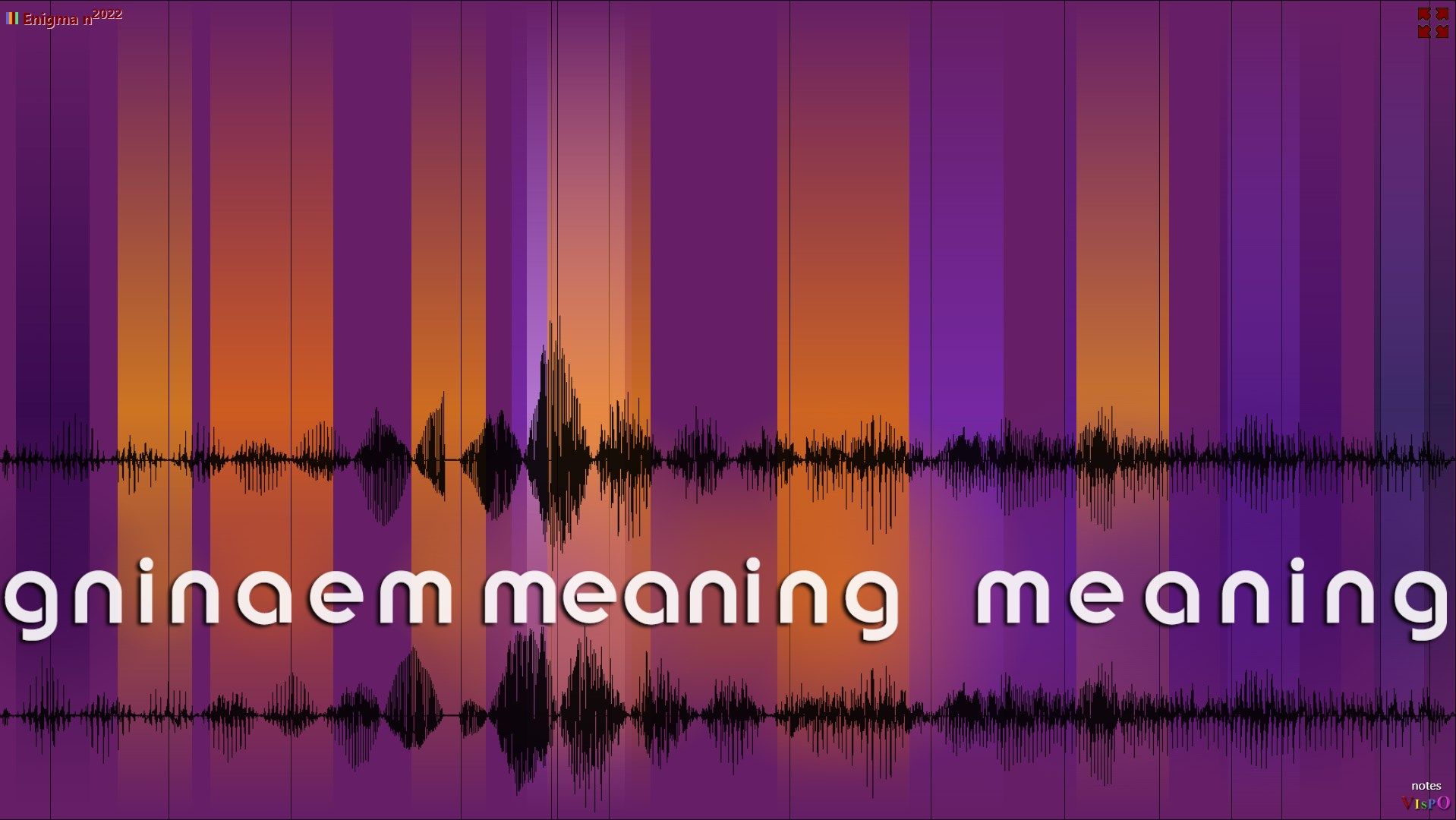
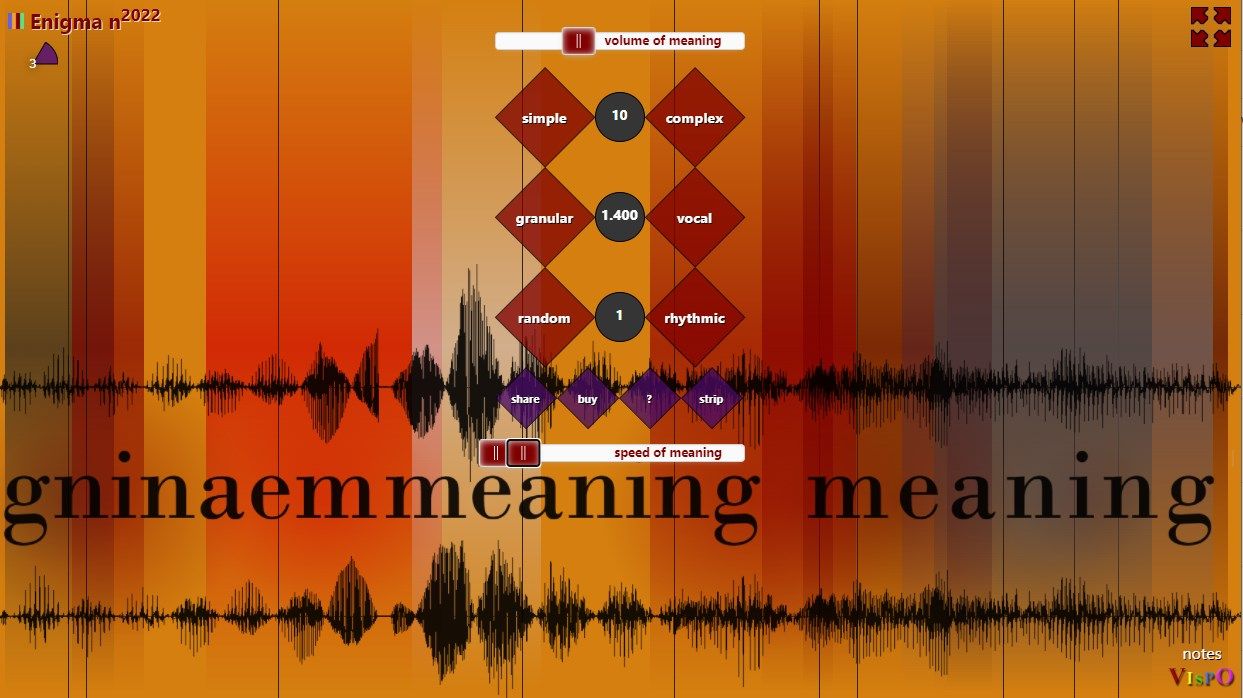
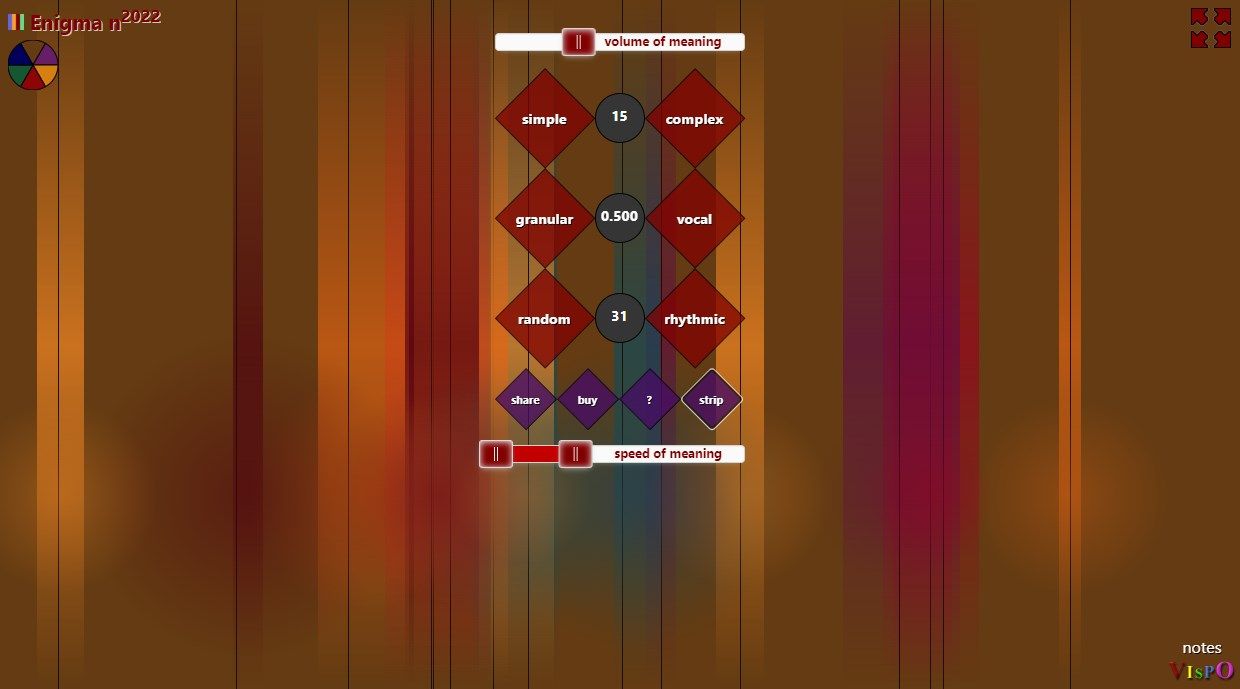
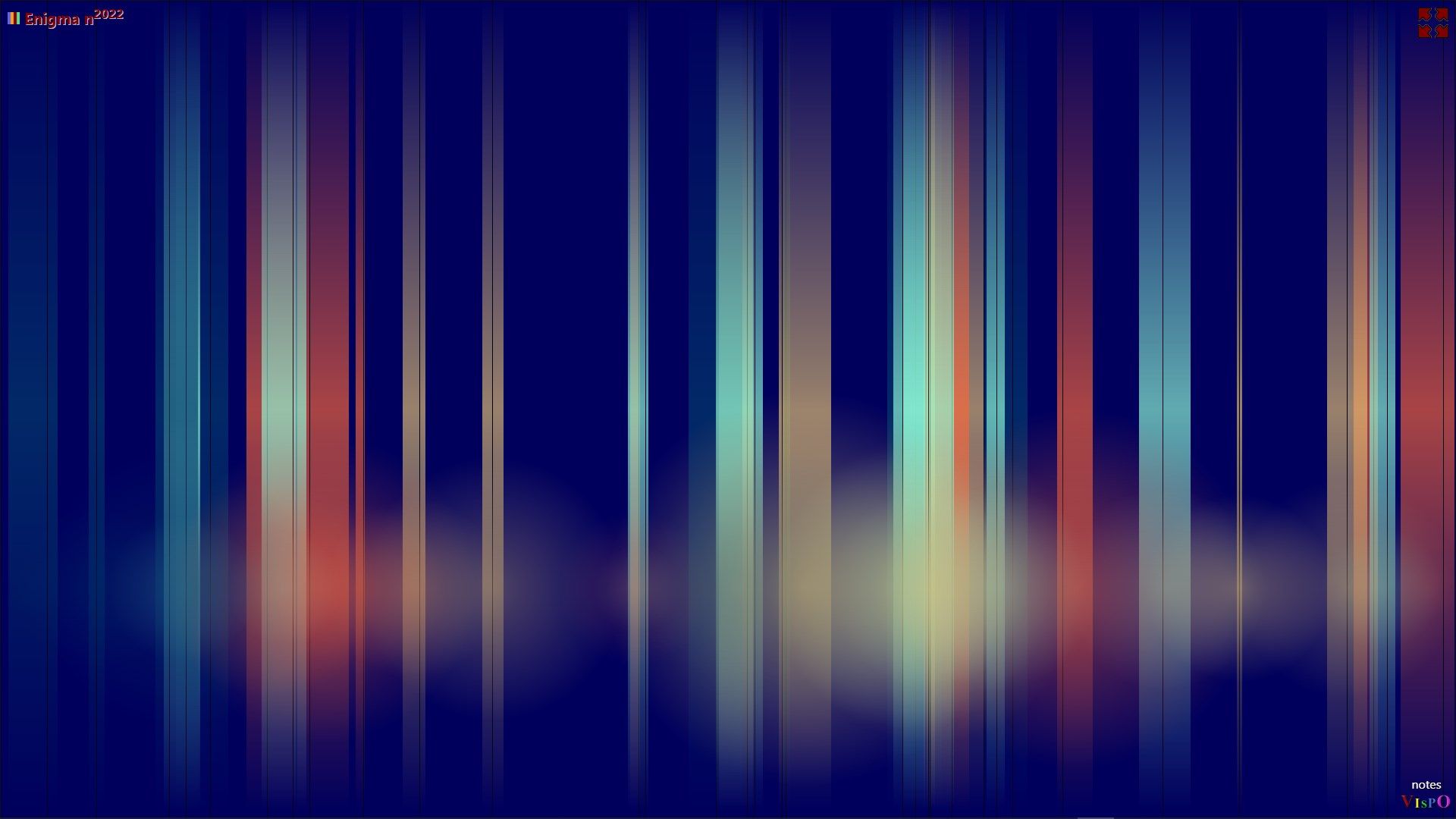
App details
About Enigman2022
Minifesto
Enigma n^2022 is a philosophical music & poetry toy for poets, musicians & philosophers from the age of 7 up. This is a new sort of poem. A new sort of music. A new sort of toy. A new sort of instrument. A new sort of art. This puts it all together.
If you do nothing, it performs in ‘gallery mode’—which it enters when there’s no input for 2 minutes (or after you press ‘g’). You just watch and listen, then. If, on the other hand, you interact via touch, mouse or keyboard, it enters ‘interactive mode’ and responds to you.
Click the background until it’s all funky—or click and hold for zipFunk, which fast-forwards you into the unknown, the interzone, through revolutions of the meanometer color pie at top left.
Set the speed of meaning slider, the audio pitch range, anywhere from 10 octaves down to 2 octaves up. You glimpse different worlds of meaning in the different levels of pitch—though the 5-second audio source sound is vocal—of the word ‘meaning’ intoned thrice,
played backwards once,
forwards twice.
The microscope opened new worlds to us. New creatures. New ideas about this world, too, not just about that one. So too with microsound concerning sound and music.
The audio consists of simultaneous slivers of sound—called ‘grains’ in the world of ‘granular synthesis’ (this is that world). ‘Slivers’ is more apt here—even ‘stripes’: each of the onscreen stripes represents a sliver, or short sample of audio, usually looped, sampled from the sole 5-second sound file from which all of the audio derives.
Different levels of pitch, or speed of meaning—together with arbitrary levels of loopiness—seemingly contain different animals, from buzzing gnats to bullfrogs and big cats—different machines, different human and semi-human voices, different jungle/menagerie soundscapes when many sounds play at once—different musics—different meaning altogether—different whole worlds—from the vocal sound at room temperature, normal pitch—the sound from which it derives.
This is not your daddy’s digital poetry or sound poetry.
This is the enigma of meaning—not a shortage of it.
Explore the concept. View six background colors to complete one revolution of the meanometer color pie—speeded by interaction, especially zipFunk.
It’s audio-centered but also visual music, color music. Use the “simple”/“complex” horizontal pair of diamond buttons (mouse, keyboard or touch) to increase/decrease the number of stripes/slivers—each of which represents a currently-playing sliver of sound.
The width of the stripe is the duration sampled from the 5-second sound ‘gninaem meaning meaning’. Sliver duration can range from 0.001 seconds to 5 seconds. The “granular”/“vocal” buttons set the max width/duration of the slivers.
Color music is what you see in the combination of colors of the stripes/slivers. Use the ‘color’ button (or the ‘x’ and ‘c’ keys, if you have a keyboard) to cycle through the palettes for a given background color. Each of the 6 background colors has a different set of 30 palettes associated with it. Pressing ‘x’ is for ‘previous palette’, while ‘c’ is for ‘next palette’. You’ll then see info such as “Palette 10 has 5 colors”. Since the stripes are not fully opaque and they often overlap, that produces new colors not among the colors of the current palette. The color is generative, in that sense. The audio is generative as well in that it consists of slivers sampled randomly from ‘gninaem meaning meaning’. The meaning is generative, but by you, in your interpretation of it.
The more sounds/stripes, the more complex the sound and visuals, in a sense. But the complexity of only 1-12 slivers has more varied music to it than the music in, say, 800-1000 slivers, which is a larger, more indistinct jungle/menagerie landscape of creatures. Whereas you get em up close with 1-12 slivers.
Complexity of sound is not the same as complexity of music.
Music is associated with distinctive patterning of sound. Past a point, the more sounds, the less distinct the sound is from what it is with one more sliver in it.
Mind, you can create 1000 slivers—and well beyond (I’ve done 1800)—if your machine is big and fast enough—though probably not if it’s a mobile device. The “complex” button attempts to save maximalists from themselves by slowing down in its adding of slivers when your system begins to groan under the weight of a thousand simultaneous slivers of ‘gninaem meaning meaning’. You can still continue to max out. But you really gotta want it. Tab to the “complex” button and press the Enter key to totally max out, if your puter can handle it.
The “random”/“rhythmic” pair of diamonds sets the max number of times each sliver will loop before it moves on to a different position and width. The slivers are rhythmic when they loop. The more times they loop, the longer they’re rhythmic. Setting “random”/“rhythmic” to 1 gives you a random sound and active animation. Try “random”/“rhythmic” at various very small values.
The enigma of meaning awaits.
Best with headphones.
Key features
-
Interactive, generative sound and visual poetry
-
Colour music of an HSL aesthetic
-
Granular synthesis based on vocal material
-
Poetry of a type the world has not seen before
-
You drive the audio and visuals with your actions--or let Enigman2022 put on the show by itself
-
Works with mouse, keyboard, and touch
-
Powered by the Web Audio API
-
Experimental electronic music
-
Works well as ambient or focused sound and visuals
-
Gallery mode kicks in after 2 minutes of no player activity. It's like a ghost occasionally shakes things up.
-
The enigma of meaning
-
Configurably many simultaneous slivers of sound
-
Configurable levels of loopiness
-
Configurable speed of meaning
-
Works well on multiple monitors/speakers
-
Sound slivers configurable in duration from 0.001 seconds to 5 seconds